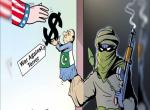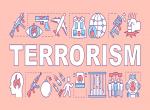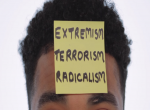Ever since the territories under the captivity of the terrorist organisation—Islamic State of Iraq and Syria (ISIS)—began to be recaptured, several analyses have been made predicting the outfit’s doomsday. The rapidly depleting financial sources and the reduction in the size of foreign fighters in the so-called caliphate are other attributing factors for this prognosis. While the ongoing discussions about the trampling of ISIS hold some substance, a complete defeat of its extremist ideology is nowhere in the vicinity. At the same time, it is doubtful whether the international community, mostly affected by this phenomenon, is doing enough to understand the theological and ideological underpinnings deployed by the outfit to attract fighters, supporters and sympathisers worldwide. Inability to counter the outfit’s pernicious ideology is going to make its flame burn for a while.
The ongoing coalition military operations against ISIS strongholds in Syria and Iraq are putting a tremendous amount of pressure against its fighters. But there are also a couple of parallel activities taking place beyond West Asia which are required to be considered. First being the exodus of well-trained foreign fighters to their native countries. The second comprises the rise of lone-actor/wolf attacks, both in the United States and Europe. This is a particular phenomenon which is raising lots of security concerns as ISIS is attracting a number of disaffected individuals and terror groups which continue to have illusions of establishing a global caliphate.
Terrorism, earlier, comprised of coordinated attacks by existing organisations which had developed the wherewithal to inflict damages. But this is changing with the induction of unknown lone wolves whose actions are difficult to detect and deter. A vast majority of attacks in the Western world have either been carried by ISIS operatives or by the lone wolves who drew inspiration from the outfit. Activities by these individuals have gone in favour of this outfit which continuously attempts to spread its tentacles all over the world.
There is a growing concern about the security challenges the returning foreign fighters will pose to their countries. With the significant decline in the influx of fighters into Iraq and Syria, a pertinent question has arisen whether “terrorism threat is actually easing or just morphing into a more dangerous new phase”.1 This is when the relevance of the returnees comes into the picture as a new phase may be in the offing. There is this possibility of the returnees teaming up with those radicalised who did not get an opportunity to travel abroad. In other words, the return journeys are likely to exacerbate the problem of violent extremism domestically.
The concerns emanating out of such reversal will be serious not only in countries such as Tunisia, Saudi Arabia, Russia, Turkey and Jordan (from where highest numbers of foreign fighters joined ISIS)2 but also in Europe and as far as Australia. The problem is not solely anymore about people departing towards Syria/Iraq but the threats emerging from those who are fleeing the outfit’s strongholds. Simultaneously, it has to be acknowledged that not all the returning foreign fighters will want to continue fighting or “form the next generation of global jihadists”,3 but the presence of even a small fraction with such inclination should not be taken lightly. Some of them are still convinced “of the righteousness of their cause”. This is mostly applicable in the European context where there is an exponential rise of radicalisation. A study conducted by the Sydney-based Lowy Institute categorises “the future foreign fighter cohort in Syria and Iraq into four categories, and they are as follows: …those who chose to remain in Syria and Iraq; those who leave in order to continue violent jihad in another theatre, either at home or elsewhere; those who seek to return to their country of origin; and those who go to a third country of refuge… “4. Keeping a track of any of these groups is going to be a mammoth task for the law enforcement authorities.
Considering the recent surge in attacks, security officials from the European Union (EU) countries and the US have expressed their concerns about the likely fallout with ISIS’s military defeats. The risk is acute in France which has faced a few brazen attacks within a period of one year. French Prime Minister Manuel Valls mentioned that there are “nearly 700 jihadists who are either French or live in France are in Iraq and Syria at the moment”, and “their return represents an additional threat to our national security… it’s going to be a long fight”. 5 As it is, news of ISIS-connected lone-wolves activities and similarly terrifying incidents have been widely reported from Belgium, Germany and the US since the last few months. While some of them turned out to be ISIS-directed/inspired, there have been cases when the outfit’s connections with the perpetrators were tenuous. Presently, there is a dreaded concoction of mental-health illness, violence streak and religion-based radicalization which is on the upswing, resulting in acts of terror.
The lone-wolves attacks are gradually instilling fear amongst the civilians. This is more so because of the nature of their target audience and the locations such as theatres, pubs, malls, train stations, airports, etc. The recent bombings in New York and New Jersey, and stabbing in Minnesota are the cases which illustrate such trends. However, formal linkages of the attackers, namely Ahmad Khan Rahami and Dahir Adan, with faraway terror groups such as ISIS are yet to be ascertained. In between inspired individuals who act alone and those terrorist operatives acting at the orders of leaders from Syria or Iraq, there are also individuals who “operate somewhere between the two extremes”.6 And as ISIS has heralded many of these attacker as its “soldiers”, a copious amount of investigation is required to get to the bottom of the matter and challenge this narrative. Their presence, however, is increasingly becoming a serious menace for the counterterrorism agencies. As aptly expressed by Federal Bureau of Investigation (FBI) Director James Comey, “The so-called caliphate will be crushed. The challenge will be: Through the fingers of that crush are going to come hundreds of very, very dangerous people. They will not all die on the battlefield in Syria and Iraq. There will be a terrorist diaspora sometime in the next two to five years like we’ve never seen before”. 7
The international community cannot afford to remain complacent by merely looking at the decline of ISIS in West Asia. As the outfit is losing grounds, it is likely to turn to insurgency in its core areas while its fleeing fighters will likely conduct sporadic attacks in their native countries. The latter scenario is a matter of grave concern given the rising phenomenon of homegrown extremism in different countries. The undetectable nature of these radicalized lots will remain a major security challenge. In the wake of the threats coming from radicalized individuals, returnees and terrorist operatives, there is a need for higher security vigilance and enhanced coordination between agencies. One should be cognizant of the fact that the threats are fast changing from direct attacks to that of inspired attacks and they are rapidly spreading. Lastly, as the foreign fighters go home, they will carry the terror ideology along with them.
Endnotes
- Griff Witte, et.al, “Flow of foreign fighters plummets as Islamic States loses its edge”, The Washington Post, 9 September 2016.
- For further discussion, see “Foreign Fighters: An Updated Assessment of the Flow of Foreign Fighters into Syria and Iraq”, The Soufan Group, December 2015.
- Liz Burke, “Returned Jihadists: The horror that comes after Islamic State”, News.com.au, 28 September.
- Lydia Khalil and Rodger Shanahan, “Foreign Fighters in Syria and Iraq: The Day After”, Lowy Institute, September 2016, p. 7.
- “Ticking Time Bomb Of Foreign ISIS Fighters Returning Home”, NDTV, 9 September 2016.
- Mathew Levitt, “The New York Bomber Was not a Lone Wolf”, The Washington Institute for Near East Policy”, 21 September 2016.
- Allen Cone, “FBI director warns of ‘terrorist diaspora’ after Islamic State crushed”, UPI.com, 27 September 2016.
Published Date: 7th October 2016, Image Source: http://www.independent.co.uk
(Disclaimer: The views and opinions expressed in this article are those of the author and do not necessarily reflect the official policy or position of the Vivekananda International Foundation)










Post new comment